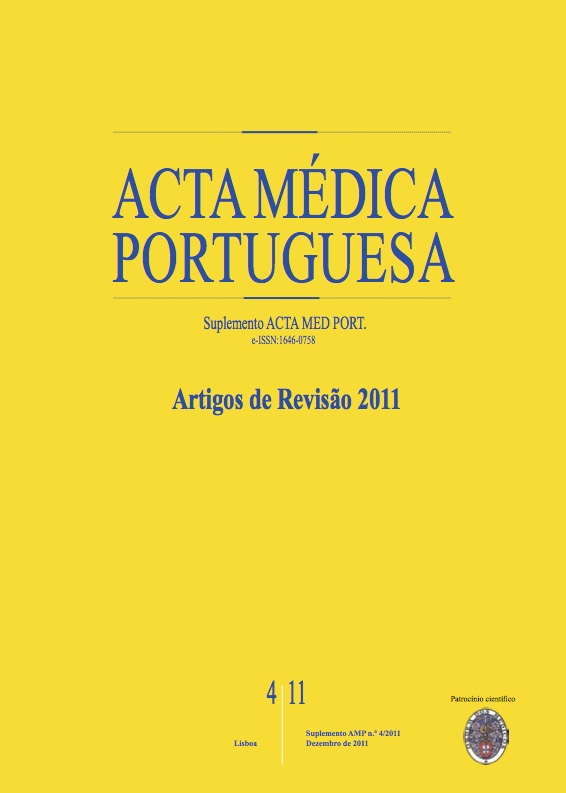Anemia na Doença Renal Crónica: da evidência à prática clínica.
DOI:
https://doi.org/10.20344/amp.1584Resumo
Anemia in Chronic Kidney Disease (CKD) is present in approximately 90% of patients with glomerular filtration rate below 25-30 mL/min. It's impact in the quality of life makes it one of the major problems in CKD patients. Although the etiology is multifactorial the suboptimal production of erithropoietin caused by renal mass loss appears to be of major importance. After the introduction of Erythropoiesis Stimulating Agents (ESA's) the treatment of anemia in CKD has changed dramatically. Today, ESA's have a fundamental role in the increase of Hb values in CKD. Previously, severe anemia was frequent and blood transfusions were often necessary to improve patients quality of life. Small observational studies performed during the late 80's suggested that high Hb values may be benefic in CKD patients. At that time, the use of ESA's became universal. Later randomized trials tried to show the positive impact of rising Hb levels with ESA's in patient's outcome. The results of such studies were disappointing. Some of them even documented higher mortality associated with near normal Hb levels, failing to prove the real benefit of the complete correction of CKD anemia. We're still waiting for new randomized trials to be elucidated about the optimal target of Hb to achieve in CKD and the treatment algorithm with ESA's. Current evidence suggests that Hb values must be targetted at 11-12 g/dL, without reaching the complete correction of anaemia.Downloads
Downloads
Como Citar
Edição
Secção
Licença
Todos os artigos publicados na AMP são de acesso aberto e cumprem os requisitos das agências de financiamento ou instituições académicas. Relativamente à utilização por terceiros a AMP rege-se pelos termos da licença Creative Commons ‘Atribuição – Uso Não-Comercial – (CC-BY-NC)’.
É da responsabilidade do autor obter permissão para reproduzir figuras, tabelas, etc., de outras publicações. Após a aceitação de um artigo, os autores serão convidados a preencher uma “Declaração de Responsabilidade Autoral e Partilha de Direitos de Autor “(http://www.actamedicaportuguesa.com/info/AMP-NormasPublicacao.pdf) e a “Declaração de Potenciais Conflitos de Interesse” (http://www.icmje.org/conflicts-of-interest) do ICMJE. Será enviado um e-mail ao autor correspondente, confirmando a receção do manuscrito.
Após a publicação, os autores ficam autorizados a disponibilizar os seus artigos em repositórios das suas instituições de origem, desde que mencionem sempre onde foram publicados e de acordo com a licença Creative Commons









